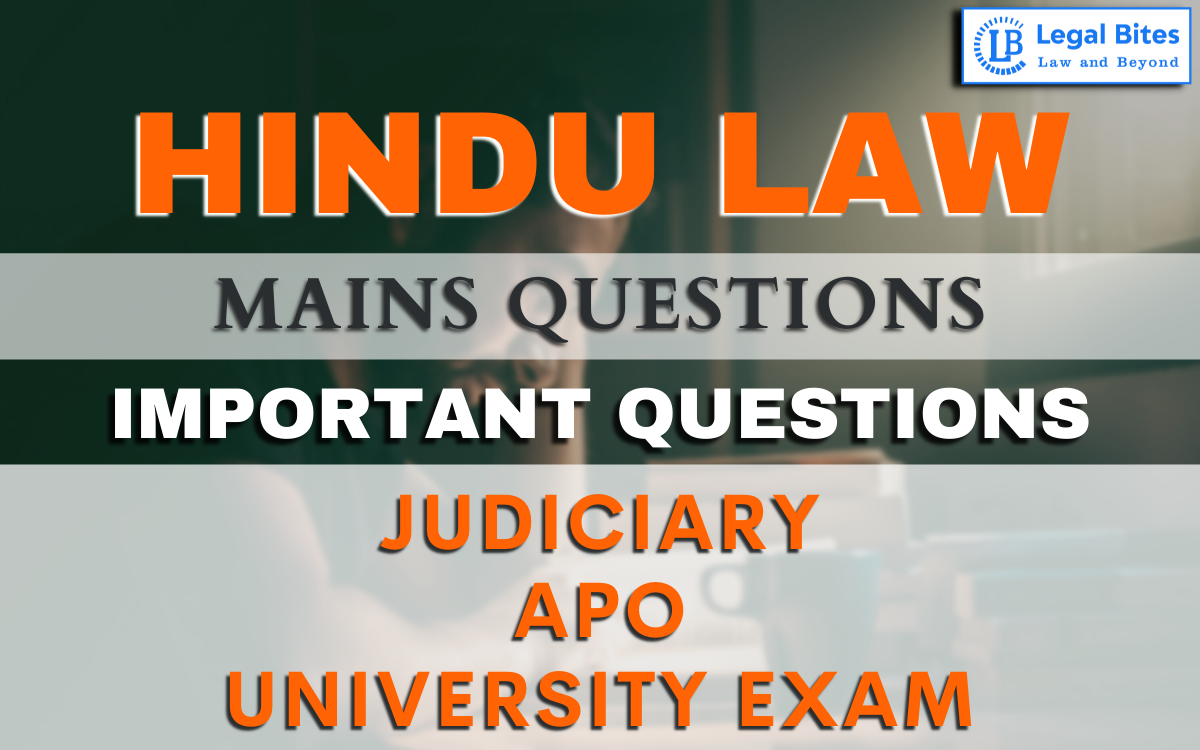Discuss the Partition in Dayabhaga and Mitakshara Schools.
Question: Discuss the Partition in Dayabhaga and Mitakshara Schools. Find the answer only on Legal Bites. [Discuss the Partition in Dayabhaga and Mitakshara Schools.] Answer Before the codification of the modern Hindu law i.e., the Hindu Succession Act of 1956, there existed ancient schools of Hindu law by the name Dayabhaga and Mitakshara Schools. The Dayabhaga School was… Read More »
;
Question: Discuss the Partition in Dayabhaga and Mitakshara Schools. Find the answer only on Legal Bites. [Discuss the Partition in Dayabhaga and Mitakshara Schools.] Answer Before the codification of the modern Hindu law i.e., the Hindu Succession Act of 1956, there existed ancient schools of Hindu law by the name Dayabhaga and Mitakshara Schools. The Dayabhaga School was prevalent particularly in regions of Bengal and Assam whereas the Mitakshara School was followed majorly across all...
Question: Discuss the Partition in Dayabhaga and Mitakshara Schools.
Find the answer only on Legal Bites. [Discuss the Partition in Dayabhaga and Mitakshara Schools.]
Answer
Before the codification of the modern Hindu law i.e., the Hindu Succession Act of 1956, there existed ancient schools of Hindu law by the name Dayabhaga and Mitakshara Schools. The Dayabhaga School was prevalent particularly in regions of Bengal and Assam whereas the Mitakshara School was followed majorly across all the other parts of the country.
Partition under both the schools deals with the joint family property. Any property possessed by a coparcener does not count under the ambit of partition. Certain properties are indivisible in nature such as common staircase, garden, utensils, etc. In such a case, the indivisible properties can be divided by three methods:
- Firstly, by using the property in turns or jointly.
- Secondly, allotting the share of a coparcener and adjusting its value with the other properties allotted
- Thirdly, by selling the property and distributing the sale proceeds among the coparceners.
In the Dayabhaga School, when the partition is claimed by any coparcener, the division of property takes place in such a manner that the share does not fluctuate through the birth or death of coparceners. However, this is not the case with Mitakshara School. In Mitakshara School, the division happens like the division of status, where the share fluctuates through the birth and death of a coparcener.
Who can Initiate Partition
In the Mitakshara School, the coparcenary comprises the father, son, grandson, and great-grandson (up to four degrees). This means that all of the abovementioned persons can demand a partition. However, in Dayabhaga School, the son, grandson and great-grandson cannot ask for partition till the time their common ancestor (father) is alive. Moreover, in Mitakshara School, when a suit for partition is initiated, then the partition takes place at that very moment.
To understand it better, there are two stages in a Mitakshara partition, the first being the severance of status and the second being the division of property. Hence, upon the initiation of the suit, the common meeting of minds confirms the severance of status and only the division if the property is left. However, in the Dayabhaga School, only the filing of the suit does not initiate partition, but partition takes place upon the decree of the court.
Women’s Share
With respect to the share of the wife, in Mitakshara school, the wife or widow of the coparcener gets a share, even though she cannot initiate a partition. However, in the Dayabhaga School, the wife is not entitled to any share and all the powers of shares are given to the husband. With regard to the stepmother, in Mitakshara School, she is entitled to a share in the partition, whether she has a son or is sonless. On the contrary, in Dayabhaga School, a sonless stepmother has no share in the property upon partition.



